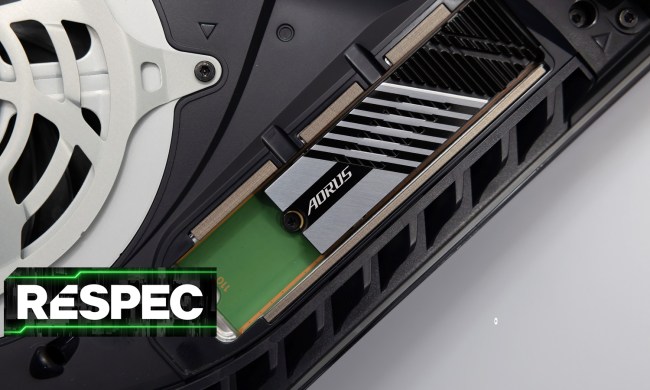The moment Final Fantasy XVI hit Steam, I had the download queued. I plan on doing a closer look at the PC release once it arrives on September 17, but after playing through the opening section of the game, it’s already looking like a promising PC port. It’s well-optimized on the CPU, there are a ton of graphics options, and it’s loaded with PC gaming tech. There’s just one problem I’d like to see addressed before launch.
That mainly concerns the game’s PlayStation 5 roots, where it ran either at 30 frames per second (fps) in resolution mode, or a wildly unstable 60 fps in its performance mode. Despite the PC release supporting frame rates up to 240 fps and running much smoother on modern hardware, its basis on PS5 still shows up, particularly in cutscenes.
Cutscene woes

Let’s start there. Cutscenes are locked to 30 fps, and they resemble that juddery response that you can see in the PS5 release. There are plenty of PC games with cutscenes that are locked to 30 fps, and although it’s annoying, it’s something that’s easy to look past. Cutscenes are very close to the action in Final Fantasy XVI, however. The game will transition in and out of cutscenes during gameplay, and it’ll jump through a series of cutscenes between battles, particularly in the opening hours of the game.
Some of these cutscenes are locked at 30 fps, others are rendered in real time, and others still are rendered in real time but are locked to 30 fps. It’s not a big deal if you’ve already played the game on PS5 — you can skip most of the cutscenes anyway. If this is your first time going through the game, however, the variable cutscenes can break the immersion a bit.
My biggest issue are Cinematic Strikes, however. If you aren’t familiar, these are quick time events that happen during large battles, usually with a cinematic camera that resembles a cutscene. I’m not sure if Final Fantasy XVI actually transitions to a cutscene during Cinematic Strikes, but it felt that way. The frame rate would immediately tank at the beginning of the Cinematic Strike and return to normal after. I would normally blame the frame rate drop on everything that happens during a Cinematic Strike, but I never experienced that kind of stark frame rate dip elsewhere. That was true in battles and even the opening Eikon battle.
It probably isn’t possible to get 30 fps cutscenes up to snuff. They’re likely just video files, and they were never rendered in the game at all. Hopefully the Cinematic Strikes are in a different camp, and Square Enix can keep the frame rate smooth during those transitions once the full release is here.
Remarkable elsewhere

Even with that caveat, Final Fantasy XVI looks amazing and runs smoothly on PC. I took it out with the RTX 4090 at 4K with the Ultra preset, and I was getting around 80 fps with Deep Learning Anti-Aliasing (DLAA). The RTX 4090 is insanely powerful, sure, but even it couldn’t manage 60 fps in Black Myth: Wukong with its highest graphics preset. With DLSS set to Auto, I was locked at 120 fps.
As far as upscaling goes, Final Fantasy XVI supports everything. You have Nvidia DLSS 3 and AMD FSR 3, both with frame generation, and Intel XeSS 1.3. The game even includes “legacy” upscaling, which is basically AMD FSR 1. Although you can use the typical performance modes for each, Final Fantasy XVI also includes a dynamic resolution option that will adjust the internal resolution in real time to reach your target frame rate.
Outside of graphics options, I was happy to see how Final Fantasy XVI scaled on the CPU. I was testing with the Ryzen 7 7800X3D, and instead of a few of the threads carrying the brunt of the load, everything was evenly spread out. Each of the 16 threads had between a 30% and 50% load throughout the demo, which is a very positive sign. I haven’t see a game that utilizes the CPU as effectively since Cyberpunk 2077.

Memory utilization wasn’t as positive. At 4K, I was hitting around 10GB of VRAM usage, though that decreases significantly at lower quality settings and resolutions. More importantly, I was clocking around 19GB of memory usage while playing. The game calls for 16GB of memory, though I’d recommend 32GB if you want to go above 1080p. On the GPU side, the developer says you’ll need at least an 8GB graphics card, even for the minimum requirements.
I’m not sure if Final Fantasy XVI is ready to go on PC or if optimization is still underway, but my time in the demo was very positive. I’ll need to continue looking at different CPU and GPUs to see how they hold up, but the game itself already looks well optimized and it comes with a ton of options to improve your performance.





